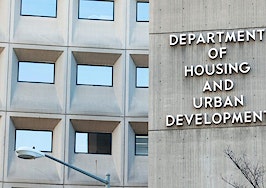- There are many eligible sources for down payment funding, including federal and local governments, nonprofits, employers and others.
- Some housing finance agencies are using a newly created source that creates the funding from the sale of the first mortgage loan into the secondary market.
- If a buyer is using the housing finance agency first mortgage sale revenue to fund down payment assistance, the buyer should be provided with a disclosure.
The funding for down payment assistance (DPA) can come from numerous sources, and if you are going to take a position on if DPA is a good thing or a bad thing, you should know the differences.
DPA programs have been in existence for decades, far before the credit crisis and before and after the seller-funded programs that were shut down by the IRS and Department of Housing and Urban Development (HUD).
How DPA programs work
Thousands of DPA programs have been financed by federal funding sources, such as HUD’s HOME Program and Community Development Block Grant (CDBG), and the programs have no impact on the interest rate or credit underwriting for the first mortgage, which can be a government or conventional loan.
These programs are funded and underwritten independently of the first mortgage and are offered by government or nonprofit agencies. The agency that offers the program decides the payback terms of the second mortgage based on its specific constituent needs.
In a very low-income area that may be in need of revitalization, the offering agency may provide a deep second mortgage with no payments due, no interest and due only on sale.
In a higher-income area, where the workforce cannot afford to live close to work, the offering agency may provide a second mortgage with a share of the expected appreciation. None are reliant on first mortgage interest rates.
The only time a DPA program is dependent on the interest rate of the first mortgage is when a housing agency is using premium pricing to generate the funding for their program.
The way it works is: the borrower pays a higher interest rate for their mortgage. Because of the higher interest rate and higher revenue expected over time, that mortgage loan is worth more in the secondary market.
If the loans are pooled into a mortgage-backed security, it is worth more to an investor than a market rate mortgage backed security.
This structure is called premium pricing, and it is only this structure that should be considered in the conversation about the future of down payment assistance.
Issues with premium pricing
Admittedly, there are problems with premium pricing. The borrowers may not be aware they are actually funding their own down payment assistance because they agreed to pay a higher rate on the first mortgage.
This may be resolved by providing the borrowers with a disclosure in plain writing that tells them, “You are agreeing to pay an interest rate that is a half point (or whatever applicable) higher than what may be available to you. You are agreeing to pay this higher interest rate because by doing so, your lender will be able to sell your loan for a price that is higher than your original loan balance and some or all of the funds will be used to provide your down payment assistance.”
The borrower can then make an informed decision.
Another issue is when a housing agency is using premium pricing to fund their DPA and they further secure it as a second mortgage with interest.
It is reasonable that borrowers may think it’s worth the opportunity to gain homeownership now, before rates go higher, by agreeing to premium pricing, but I doubt they would consider it fair or worth the additional rate if they are getting another interest rate on their second mortgage.
The borrower and the first mortgage lender may want to avoid these structures.
Considerations for down payment assistance programs
In summary, we believe these points should be considered when thinking about the future of down payment assistance programs:
- Programs funded independent of the first mortgage should not be at risk by lumping them in with premium pricing.
- If a borrower is getting a premium priced rate, they should receive a disclosure.
- Lenders should avoid any premium priced program where the second carries additional interest or share of appreciation.
Those in a position to make decisions about down payment assistance for their company, their borrower or their agency client should be very clear on the differences in funding sources.
We need to avoid a rush to wipe out good down payment assistance programs with those that may be more complex and not sustainable.
Dottie Sheppick is a founding partner of Specialty Mortgage Product Solutions, LLC. You can find out more about her on LindedIn.












